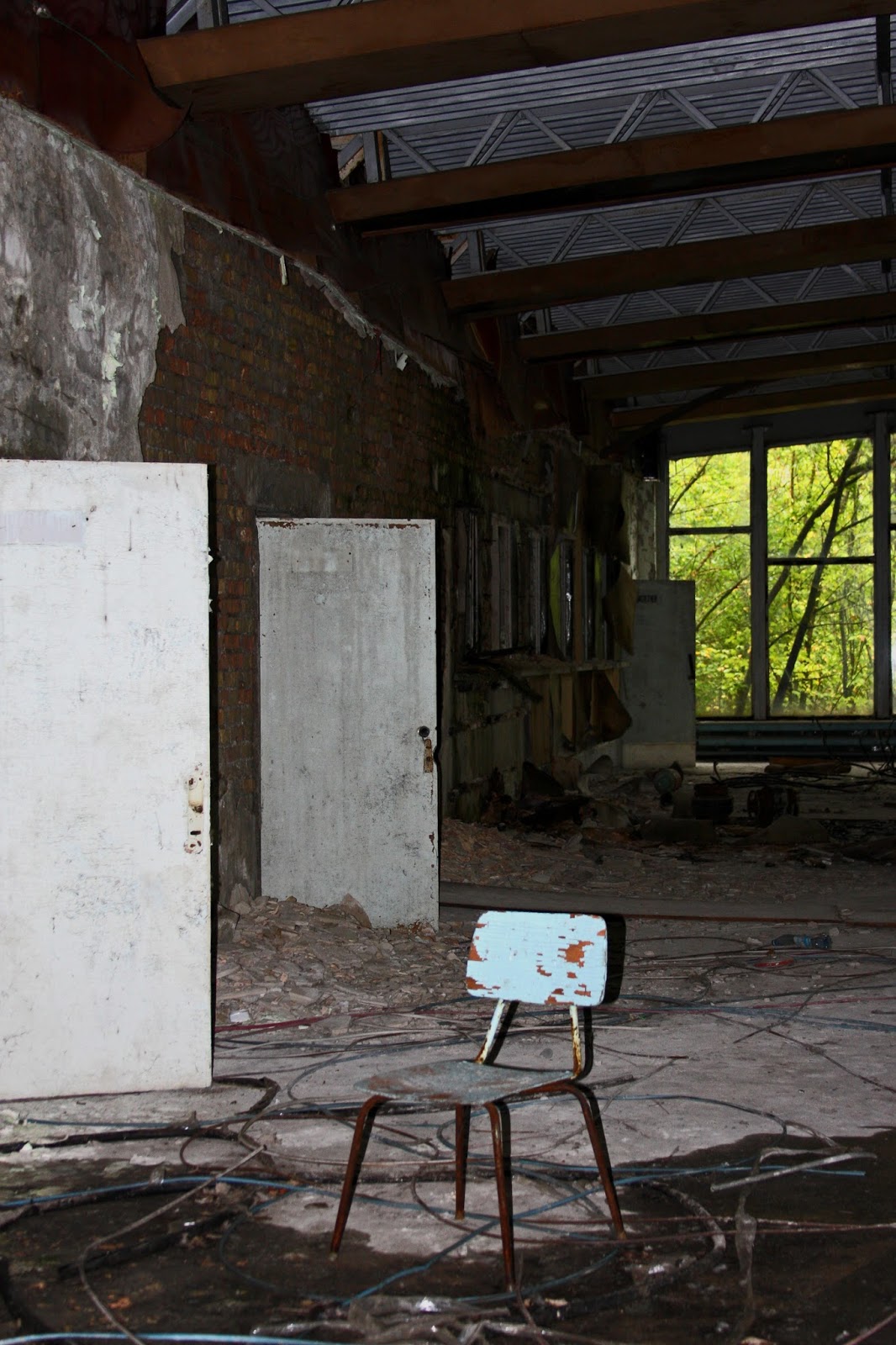I woke up bright and early on Saturday morning, filled with excitement and anticipation. Just kidding. I told Michaela that I was going to sleep half an hour later than I had stated the night before, and required food and caffeine before I was fit for proper company.
Meals were served a short walk from our hotel, by slightly sullen-looking employees forced to wear "traditional" Ukrainian outfits to serve tourists who'd come to gawk at their national tragedy. Nonetheless, they were delicious. The meals, not the employees.
First we went to the Chernobyl City church, the only one left standing. As I understand, Mother Russia wasn't too fond of religion, so they naturally didn't build too many. This particular church was originally built out of wood approximately
700 years ago. They kept rebuilding it, repainting it. As one of the Dutch guys noted, "I love the churches here. In the Netherlands, the churches are dreary and plain. Here, they're saying, '
Let's do some religion, baby!!'" I couldn't have said it better myself.
 |
| Above: religion being done. |
We went to
another memorial, this one for the robots that they employed to do the dirty work, before the radiation overcame their circuitry and they became just so-much-metal. I thought the oddest thing about this particular memorial is that they not only cleaned the robots (well, I suppose they had to decontaminate them), but proceeded to
repaint them. In offensively bright colors.



We finally reached the height of our tour... Pripyat! This city of 49,000 people housed primarily the workers for the plant and their families located a mere 2 km away from the reactors. This was a model soviet town, filled with all kinds of luxuries not found in many other places this side of the Iron Curtain. Helen noted that her mother and sister would wait for hours in a line to get bread and meat, while Pripyat residents had access to all kinds of goodies; they could buy more than what was rationed to the rest of the population. There were stores and malls, a hospital, a police station, a theater, cafes and restaurants, hotels, an Olympic-sized swimming pool. The rich in Kiev (because no matter how communist you say you are, there are always rich people) would travel to Pripyat to shop. This was a young, educated city, where the biggest problem average people had were finding a kindergarten that could accommodate your child (the average age was only 26) and the biggest crime was public intoxication.
Since 2005, the buildings have been slowly collapsing. Somewhere around 2007, Ukraine decided to prohibit entry into the buildings of Pripyat, specifically. However, our guides seemed to be cheerfully disobedient to this rule. And we cheerfully followed them into the abyss.
 |
| That door that's falling off its hinges? Yeah, we went in there. |
Okay, I'm being melodramatic. We cheerfully followed Helen into a 13 story apartment, up the stairs, around the 10th (or so) floor and onto the roof.
So, thirteen floors is kind of a bitch when you don't have an elevator. Luckily, we took a break on an obscenely high floor to look around.
So, remember how shit started to go down super early morning on April 26? Well, they told the Pripyat residents sometime during the day to just "stay inside, close your windows, there's a fire at the plant. But no need to worry." During the afternoon of April 27, they notified the residents that, due to this fire, they needed to evacuate everyone from the city. It required so many buses that they had to bring in a bunch from Kiev. To keep order and prevent panicking (and to keep people from bringing everything they owned onto these crowded buses), they told the residents they'd be returning soon and to only bring enough clothes and essentials to last them three days.
Three days. So everyone left behind family heirlooms, valuables, etc. And they were shipped to Kiev, who was also receiving their fair share of radiation.
None of them ever returned to Pripyat. Not to live, anyway.
Ukraine's Labor Day is on May 1st. They have a parade. Today, the parade that took place in 1986 is called The Parade of Death, because they insisted on carrying forth with the plans and a bunch of people were exposed to dangerous levels of radioactive dust. The government didn't want mass panic, so they didn't tell the residents of Kiev about the giant cloud of fallout hovering over them, settling on their clothes, getting breathed in, by them and their children.
The Zone of Exclusion was closely guarded by the military until the fall of the Iron Curtain. Somewhere around the chaotic aftermath, the borders were not so closely guarded. Looters came in and took everything that was worth taking. As a result, there is not a lot left in any given apartment.
 |
| Except nightmares. |
|
 |
| That's a totally reasonable place to put a toilet. |
 |
| Sad wild dog climbed up here to die and will probably stay here for a really long time. |
We climbed up, up, up.
To the top.
 |
| In the distance you can see the reactors and the new sarcophagus. On a bright day it's easily seen. |
And now I will leave you, because the kindergarten and school is coming up next, and that will take some energy to get through. And espresso. But I leave you with this cool shit to look at.



























































